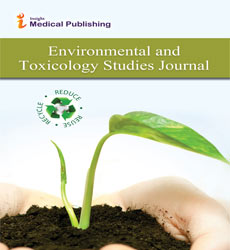Abstract
Types of and Remediation Strategies to the Toxic Impacts of Flooding on Urban Environment and Public Health
Flooding is a natural disaster that may have adverse impacts on many aspects such as the environment, agriculture, public safety and health, and urban development. There are four types of flooding: groundwater, fluvial, pluvial, and coastal. The flooding resulted from intense raining may cause serious intangible losses. The bacteria spreading mold growth, chemical toxins, and carcinogens leaking caused by flooding could influence human and animal’s health in either acute or chronic manners. This paper synthesizes types of health and environmental hazards reported from several severe urban flooding events. Bacteria, especially Escherichia coli (E. coli), chemical toxins and carcinogens (heavy metal and organic toxins) that are contained in the flood water, and mold growth could influence human and animals’ health, and cause long lasting losses, which would be very hard to recover. Macroscopic strategies to prevent flooding and therefore its toxic impacts include the development of Sponge Cities, Green Roofs, and flood plains and overflow areas. Technical treatments to remediate the toxic impacts after flooding include: boil water thoroughly before consumption, drying out houses and well treating carpet and porous surfaces, frequent screening water body, and treating water via the supported-epoxidized carbon nanotube.
Author(s): Jianbang Du , Qing Li , Yachi Wanyan3 and Fengxiang Qiao
Abstract | Full-Text | PDF
Share This Article
Google Scholar citation report
Citations : 184
Environmental and Toxicology Studies Journal received 184 citations as per Google Scholar report
Abstracted/Indexed in
- Google Scholar
Open Access Journals
- Aquaculture & Veterinary Science
- Chemistry & Chemical Sciences
- Clinical Sciences
- Engineering
- General Science
- Genetics & Molecular Biology
- Health Care & Nursing
- Immunology & Microbiology
- Materials Science
- Mathematics & Physics
- Medical Sciences
- Neurology & Psychiatry
- Oncology & Cancer Science
- Pharmaceutical Sciences

